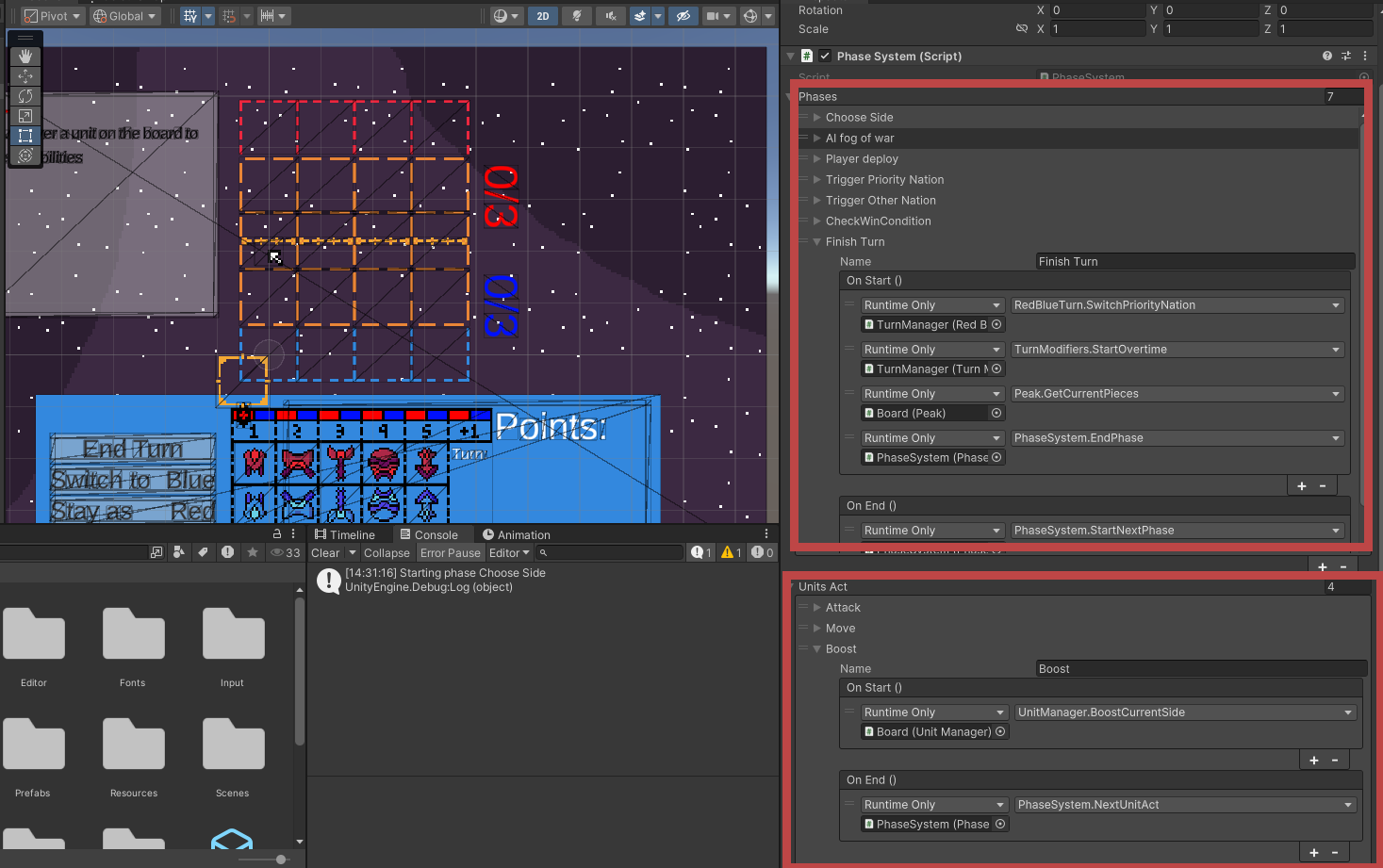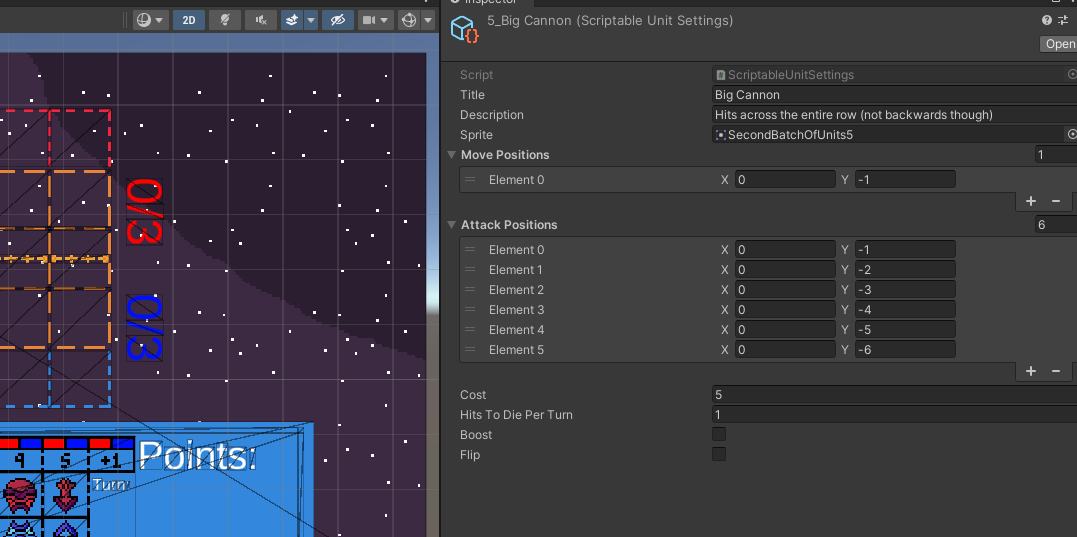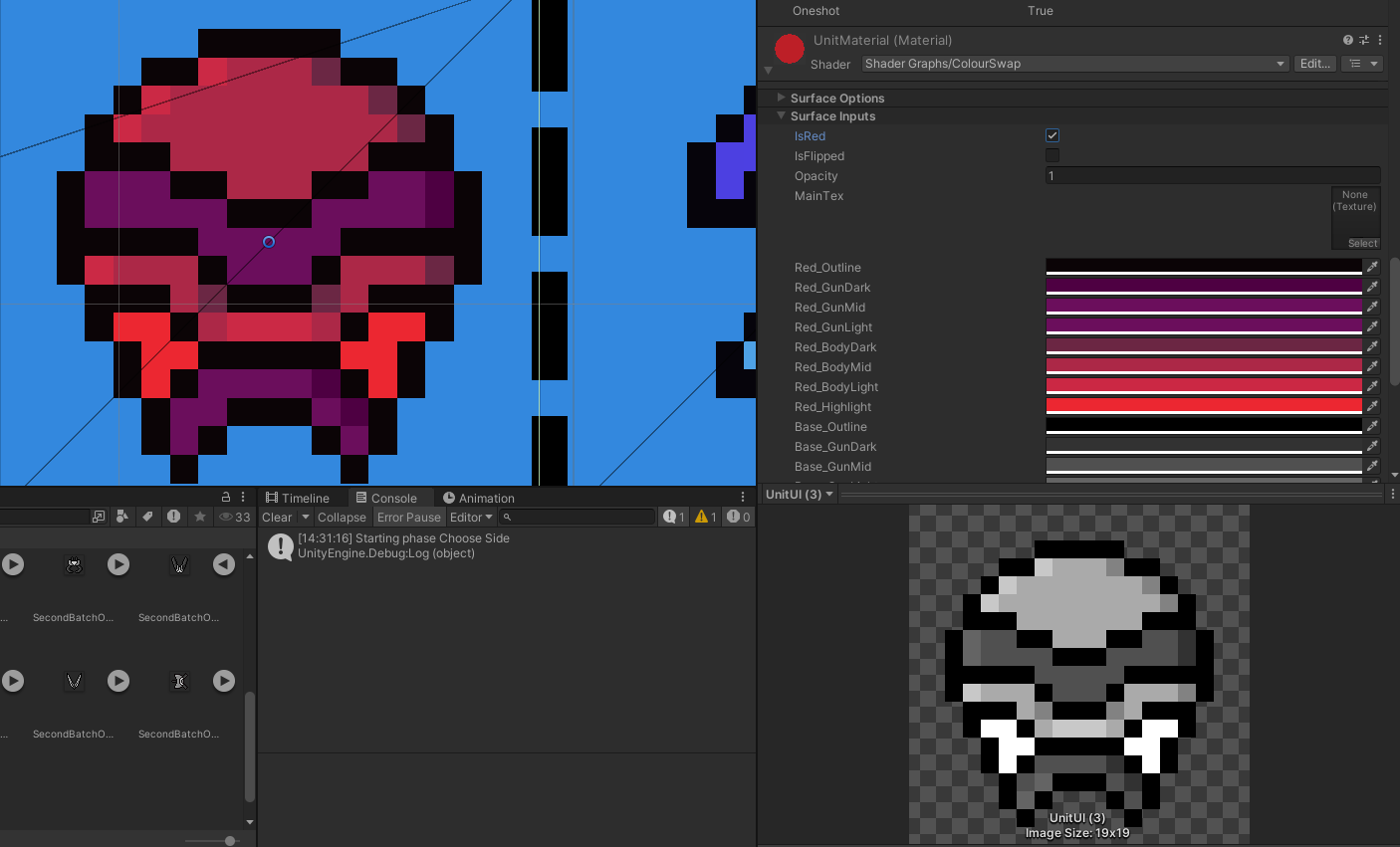A Strategy game made in Unity | Stalemate
A game where you play as both sides in order to win.

📂 Source Code
The game source code can be found on GitHub.
🚀 About the Project
Stalemate was made as a hobby project by me and Jasmine de Jong. We developed it in our free time, while doing our studies at Breda University of Applied Sciences. It is a game based on chess where you play as both sides, in order to obtain a “stalemate”. Each round, battle ship “pieces” fight among each other based on predefined rules. I was responsible for the codebase used in the project.
🎮 Play on itch.io
🛠️ Main Features
- Configurable gameplay loop using events
- AI that adapts to designer made constraints via a rating score
- Custom Scriptable Objects for making new unit types
- Serialization system for the unit types
- Audio integration with FMOD
⚙️ My Contributions
Gameplay Loop
It follows a sequential list of events for each round: player chooses sides, show fog of war units, player places units, etc. The system uses UnityEvents to allow for changing certain phases of the game easily. This is applied in the same way for unit actions (move, attack, boost), as well as the ordering of unit actions. These can be reordered, modified or deleted as needed.
Boosting is the ability of some units, to retrigger movement and attack
 Event-driven phase system allowing flexible game flow configuration
Event-driven phase system allowing flexible game flow configuration
Creating Units as Data
All units are defined using ScriptableObjects, which is a feature that Unity provides to represent objects offline. To define a unit, one has to fill their gameplay information. Sprites for each unit are expected to be in grayscale, because they get colored based on the faction colors in a shader.
 Scriptable Object setup for defining unit gameplay properties
Scriptable Object setup for defining unit gameplay properties
 Shader converting grayscale sprites to faction colors
Shader converting grayscale sprites to faction colors
AI Constrained by Design
Stalemate is based on chess and it uses backtracking to generate all possible permutations of the 5 units in the 4 squares that are available at a time. In the project, there is a scene called Backtracking that showcases how the AI rates a board. In the video below you can see how the test scene is used to generate permutation using a max cost. These are sorted based on a developer-defined rating. Blue side is configured to have a smaller rating if there are fewer units placed, therefore, the highest rating boards have as many units as possible.
Debug scene visualizing AI board evaluation and permutation generation
The constraints are once again defined offline by the designer:

Blue rating defined as a ScriptableObject